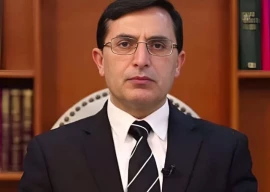
December, 2006: Assange, a 35-year-old Australian, founds WikiLeaks, a site created with the help of powerful encryption software, to let whistle-blowers post sensitive documents on the Internet without being traced.
In January 2007 he says he has already received one million documents.
April 5, 2010: WikiLeaks releases a video of a US military Apache helicopter strike in Baghdad in 2007 which killed two Reuters employees and a number of other people.
A 22-year-old American soldier, Bradley Manning, who is suspected of having leaked the video, is arrested in May and charged in July.
July 25: WikiLeaks publishes nearly 77,000 classified US military documents on the war in Afghanistan. The documents reveal details of civilian victims and supposed links between Pakistan and the Taliban insurgents.
A criminal inquiry is opened by the US authorities.
August 12: Assange announces that WikiLeaks will continue to publish the remaining 15,000 documents on Afghanistan, of which the Pentagon demands the immediate restitution.
August 21: Assange is accused of rape by the Swedish judicial authorities, who finally drop the search warrant.
Assange says he believes the Pentagon could be behind a rape accusation.
September 1: The Swedish judicial authorities reopen the probe into rape and sexual molestation.
October 23: During a press conference in London, Assange says he wants to reveal the truth about the conflict in Iraq. WikiLeaks publishes some 400,000 reports of incidents written from 2004 to 2009 by American soldiers, revealing cases of torture by Iraqi forces to which the Americans turned a blind eye.
November 18: A Swedish prosecutor issues an international arrest warant for Assange.
November 28: WikiLeaks unleashes a torrent of more than a quarter million confidential US cables detailing a wide array of potentially explosive diplomatic episodes.
Hours before the planned release of the US embassy cables, WikiLeaks said it evaded cyber attacks by changing its internet address and its server.
November 30: Assange appeals to Sweden's Supreme Court to overturn the ruling he should be detained for questioning.
December 3: Sweden sends out a new international arrest warrant for Assange that includes missing elements requested by the British police, which had prevented his arrest.
December 6: WikiLeaks divulges a secret list compiled by Washington of key infrastructure sites around the world that could pose a critical danger to US security if they come under terrorist attack.
The Swiss Post Office's banking arm says that it has closed an account set up by Assange after he gave false information. A day later Visa and MasterCard block his cards.
December 7: Assange surrenders to detectives at a police station in London, and is arrested.

















COMMENTS
Comments are moderated and generally will be posted if they are on-topic and not abusive.
For more information, please see our Comments FAQ